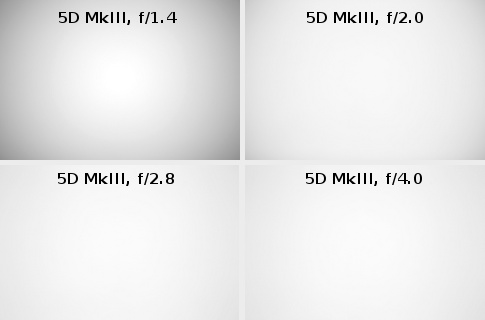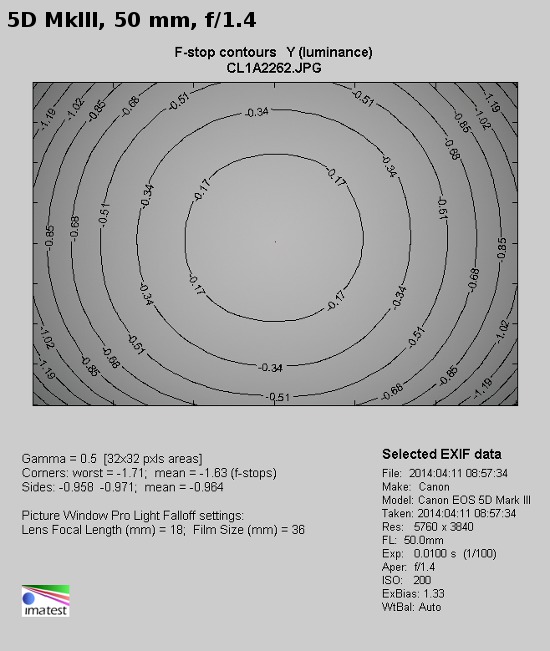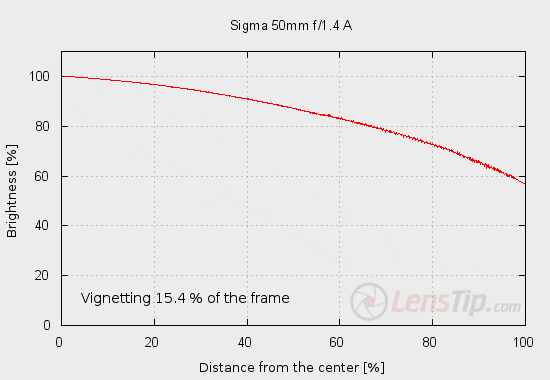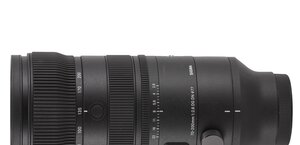Sigma A 50 mm f/1.4 DG HSM
8. Vignetting

Our visual assessment is confirmed by the measurements. You can glimpse any vignetting only at the maximum relative aperture where it is 21% (-0.69 EV). The problem disappears completely by f/2.0, amounting to just 8% (-0.24 EV).
Please Support UsIf you enjoy our reviews and articles, and you want us to continue our work please, support our website by donating through PayPal. The funds are going to be used for paying our editorial team, renting servers, and equipping our testing studio; only that way we will be able to continue providing you interesting content for free. |
- - - - - - - - - - - - - - - - - - - - - - - - - - - - - - - - - - - - - - - - - - - - - - - -
In the case of full frame the standards are raised much higher and it can be seen in the photos below as well.

At the maximum relative aperture the vignetting gets to 43% (-1.63 EV) and is distinct. Still it is worth mentioning that the Sigma fares better than the Zeiss Otus 1.4/55 which had 51% of brightness loss. On the other hand finally we get one category in which the Nikkor AF-S 58 mm f/1.4G is better than the Sigma as its vignetting, measured by us, amounted to 39%. However the Sigma’s vignetting level decreases very quickly with the stopping down - by f/2.0 it becomes moderate, being 20% (-0.66 EV) and by f/2.8 that aberration is practically imperceptible, reaching just 10% (-0.31 EV).
 |
These measurements concern just one place inside the frame and they don’t say us everything about vignetting because its overall course is important as well. That’s why we include graphs as the one, shown above, in our tests; they show isophots so lines connecting points of equal brightness, informing you about the pace of light fall-off as you go further and further from the frame centre.
To make these graphs even more reliable we decided to show another presentation. This time it is a graph of averaged brightness loss as you move away from the frame centre. The numerical value, expressed as a percentage in every picture, informs us about the dimensions of the area limited from above and from the left by a value of 100% and from below by the presented curve. That way you know how much light overall is lost due to the vignetting effect. Of course you shouldn’t mix those percentage values with the ones shown at the beginning of this chapter because they are not connected in a direct way.







